How to Make Acorn Flour
Acorn flour is fun to make and totally edible! Native Americans have been grinding acorns into flour and using the flour to make hearty stews and breads for hundreds of years – and you can too!
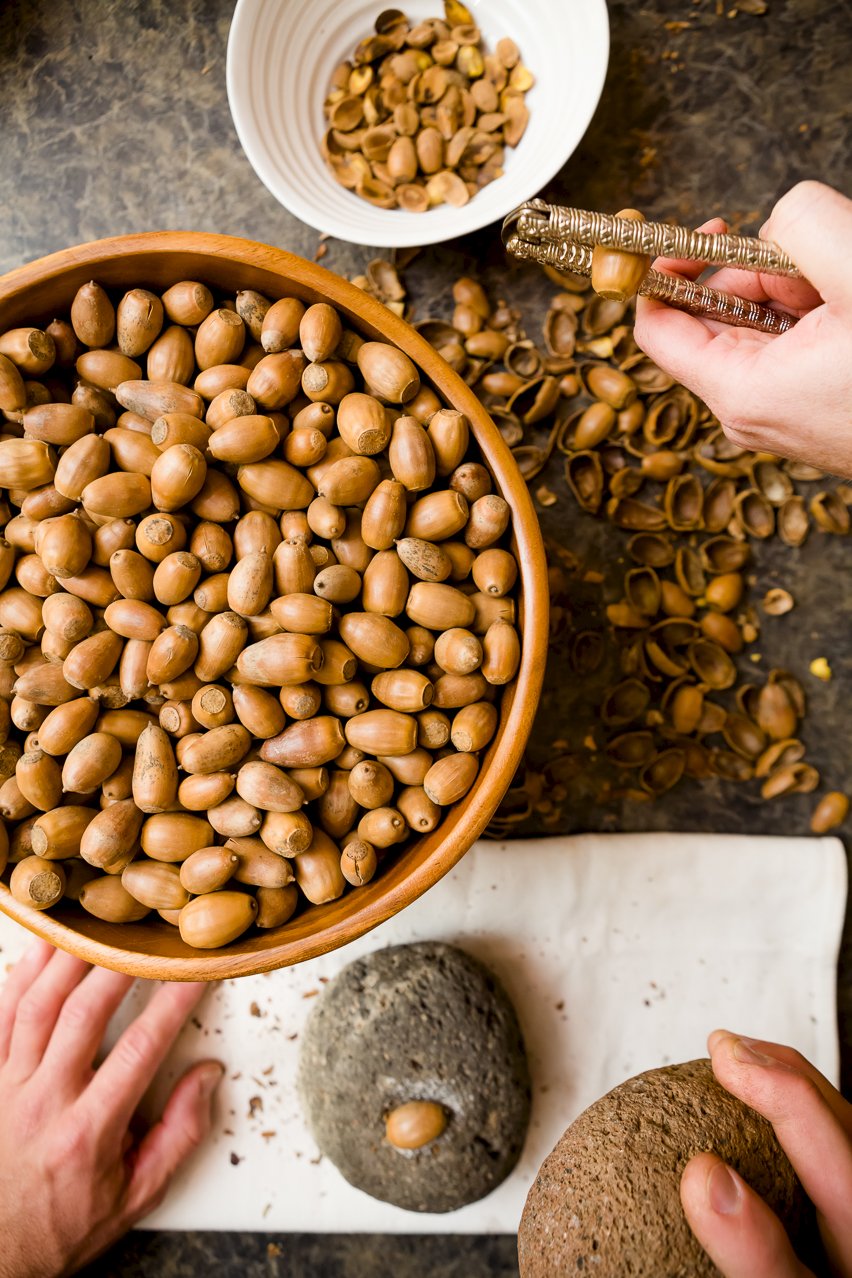
Are Acorns Edible
Yes! Acorns are edible. However, before eating one, you’ll need to remove, or leach out, the tannins. Not only is there is the possibility that the tannins could give you an upset stomach, they also taste like dish soap.
Once the tannins are removed, you can turn the acorns into flour or dry them and roast them to eat like other nuts.
Once properly prepared for eating, acorns are walnut-like, but they have a unique flavor all their own: sweet, subtle, and earthy.
Instructions
Preparing the flour is a time-consuming process – three days, excluding foraging for the acorns.
Before I get into the details, you should know that I learned everything about making acorn flour from my friend Bryan. Bryan spends half of the year teaching survival skills and is an expert on this sort of thing. I modernized some of his suggested primitive methods; he wasn’t happy about this, but you will be.
Collecting Acorns
Your first step in making acorn flour is to forage for acorns. Look for them on the ground beneath an oak tree.
All varieties of oak produce edible acorns, so you don’t need to worry about getting ill (this is always my biggest fear with foraging of any sort). However, some acorns are much easier to work with than others.
The best acorns for flour come from:
- White oak
- Burr oak
- Red oak
Pin oak acorns are more work because of their small size. They also have more tannins (bitter flavor) to remove than the others.
Some oaks, like black oak, have a thicker skin that will need to be removed – other varieties don’t have this skin. But, again, you can work with whatever you have.
I found that two pounds of acorns yields three cups of flour. Always collect more acorns than you think you’ll need because some of them will turn out to be rotten when you open them up.

Cracking Acorns
Traditionally, acorns are cracked open using rocks. Bryan has special rocks that he uses for this purpose. The rock on the bottom has a groove where you set the acorn (shown below). You then bang the top rock over the acorn to crack it. The whole experience is very satisfying in a primal way.
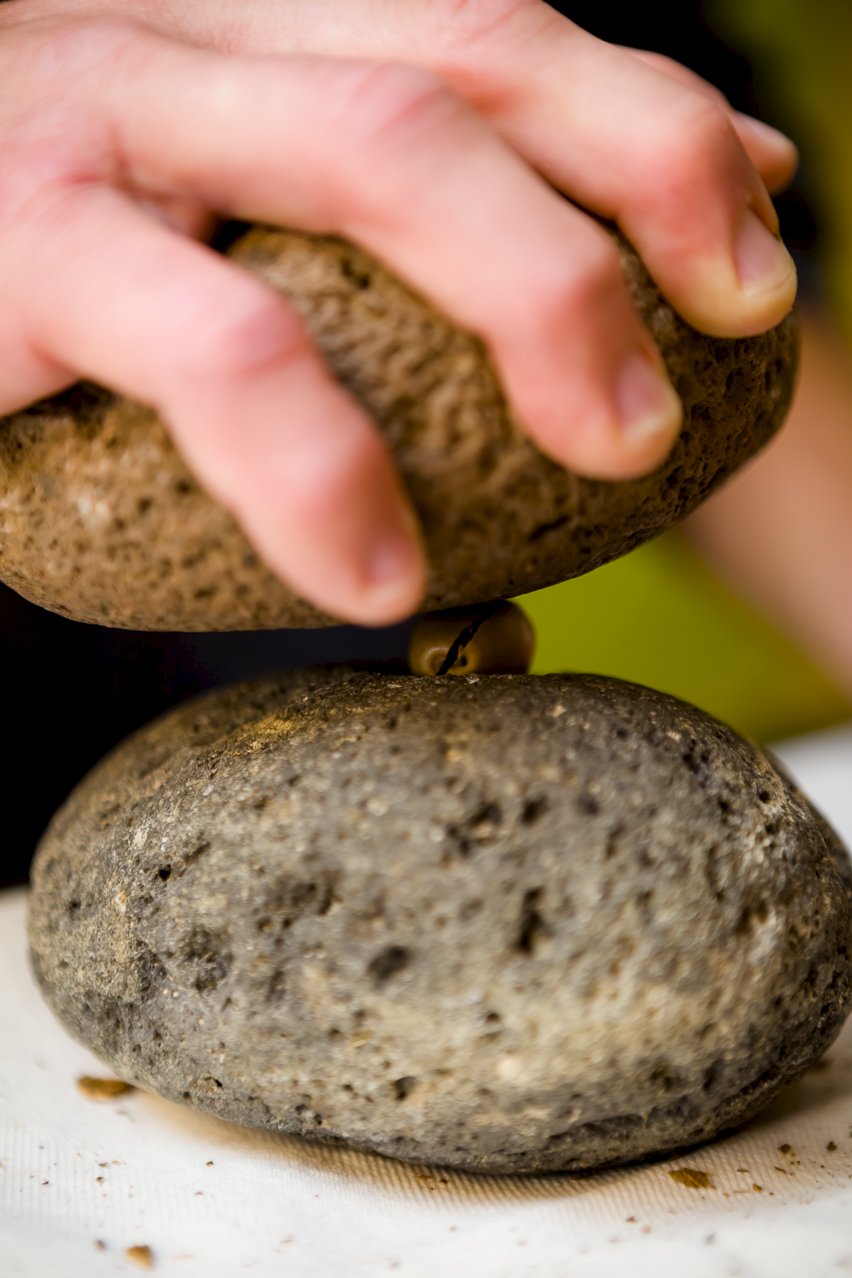
Most of us, however, don’t have the perfect rocks just sitting around waiting to be used. If you don’t have rocks, a nutcracker does the job just fine.
If, after cracking, the acorn is black or crumbles easily in your hand, it is rotten and you should toss it. If it is a hard brown nut, keep it.
Leaching Tannins
To prep the acorns for leaching, the first step is to chop the acorns.
You could again use rocks to do this, but a food processor is so much easier! Since the acorns are VERY hard, to keep your food processor from working so hard and overheating, first soak the acorns in a bowl of water overnight to soften them. Then, food process the acorns until they are broken into small pieces.
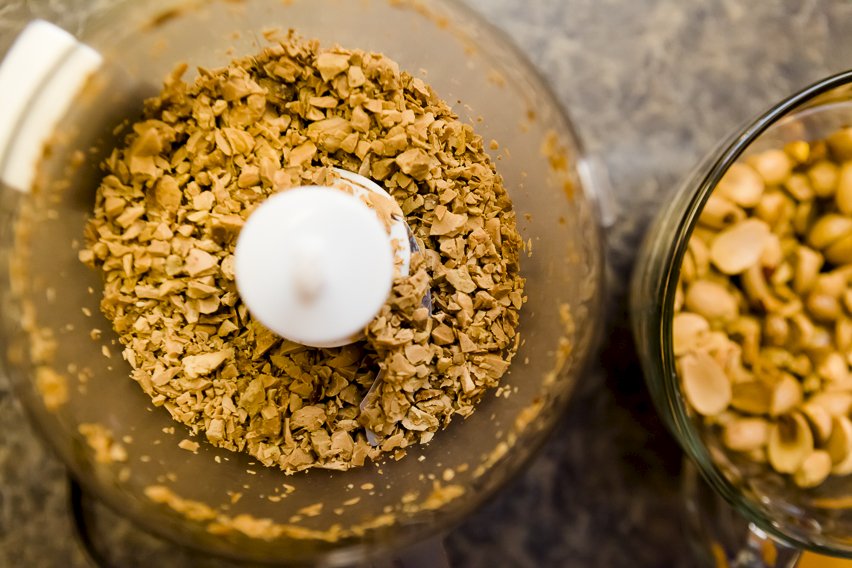
Bryan leaches his acorns in a stream. He wraps the acorns in a cotton cloth, ties the cloth to a branch, and puts it in the water. The water runs through the acorns and leaches the tannins out. If you don’t have a clean stream nearby, I recommend the sink method:
- Find a cotton cloth that you don’t care about (it will get stained) and wrap your chopped acorns in the cloth.
- Set the cloth in the sink and fill the sink with water.
- Let the acorns rest in the water for 30 minutes.
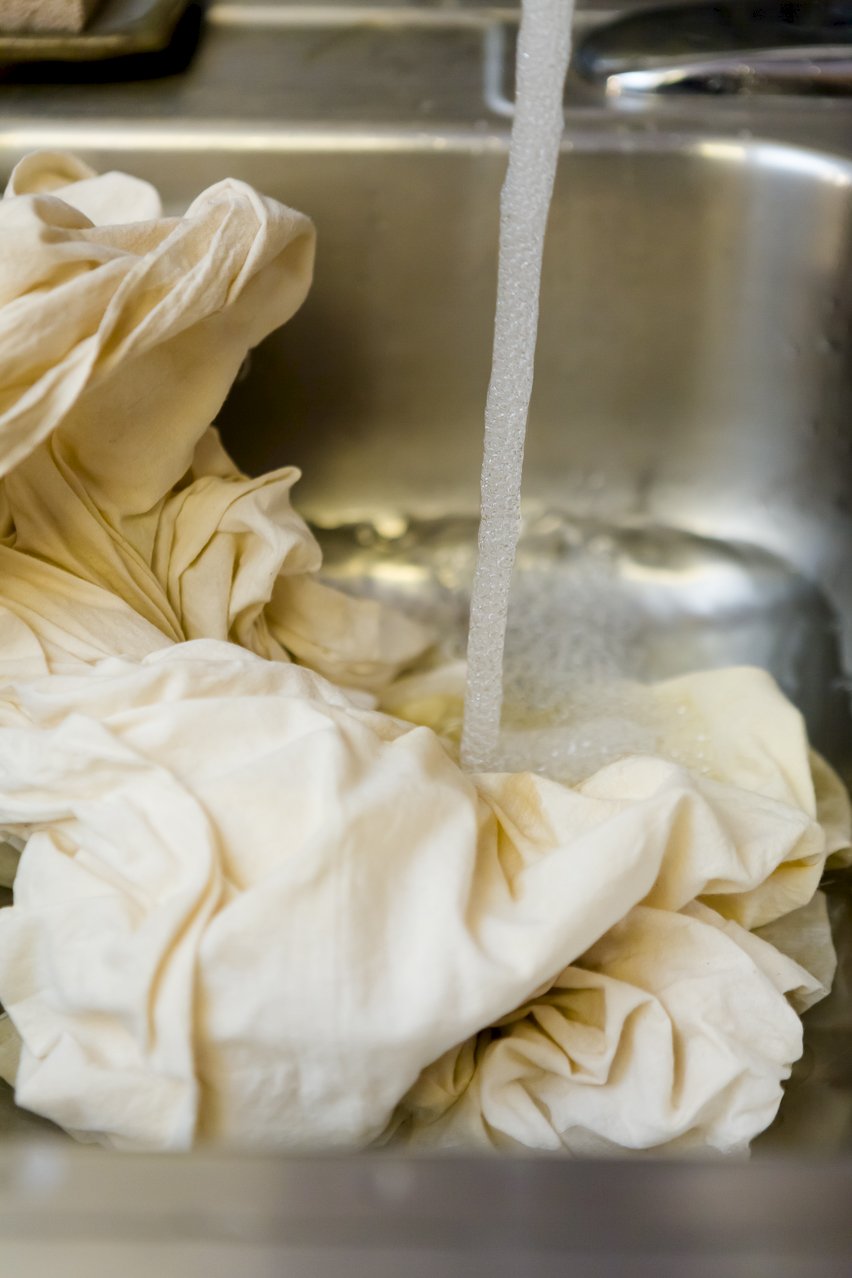
- Drain the sink and squeeze all of the excess water out of the acorn sack.
- Soak for another thirty minutes and drain again.
- Taste! Here’s where things will vary, depending on the type of oak your acorn came from. The acorns may taste great at this point or you may have a more tannins to remove.
- If the acorns still taste very bitter/unpleasant after the first two soaks, you can increase the soaking time for the next soak to a full hour. If they taste somewhat palatable but still a bit off, continue soaking just thirty minutes at a time until you don’t taste the tannins. You don’t want to over-soak because you run the risk of removing some of the acorn flavor. It took about two and a half hours to remove the tannins from my acorns.
- Set the leached acorns out on a cookie sheet to dry overnight. They should still be damp for the next step, but not soaking wet.
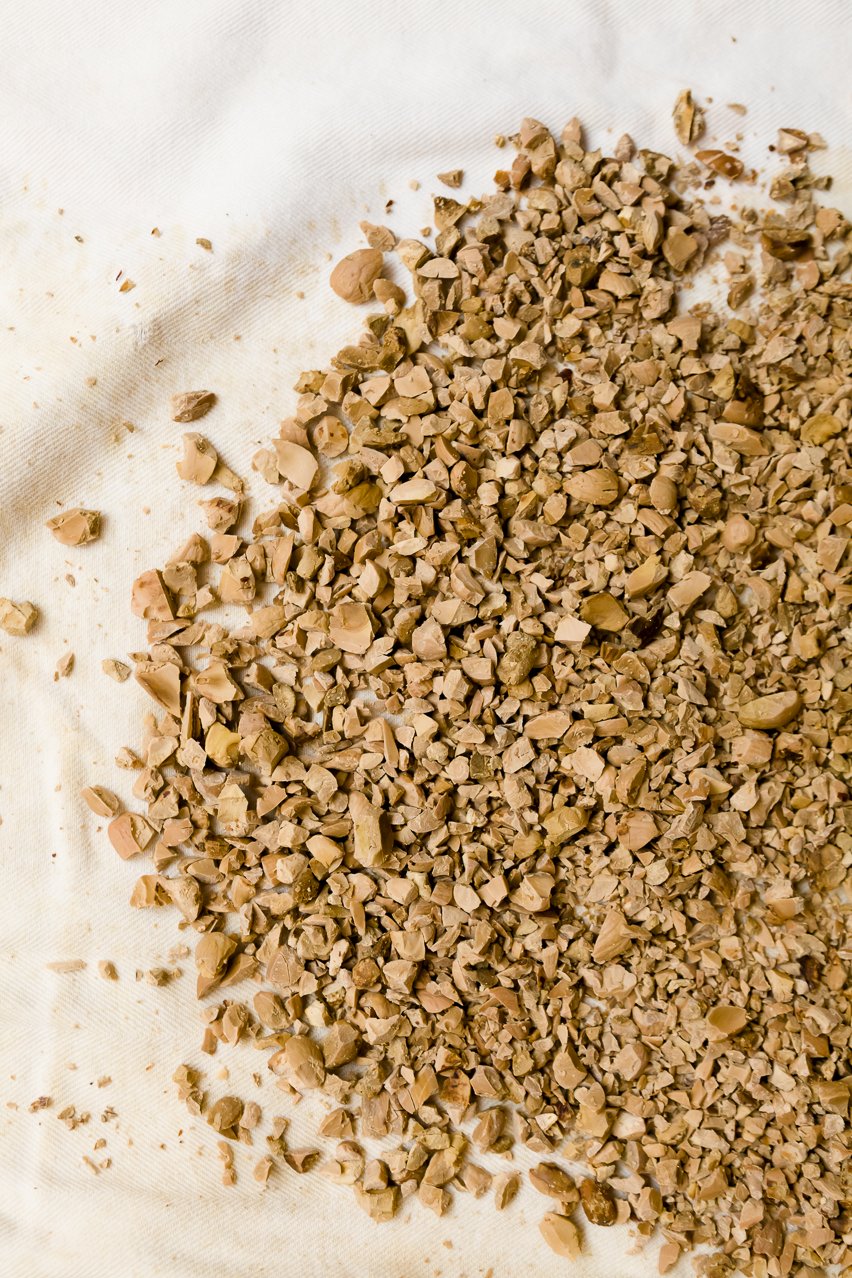
Processing
Bryan (and Native Americans) would use rocks to grind the acorns into flour. I put all of the leached acorn pieces into my blender [paid link] and twenty seconds later I had acorn flour ready to use.
Recommended Recipes
Acorn bread is the most popular recipe to make with this flour. To make acorn bread, experiment with replacing half of the bread or all-purpose flour in the recipe with acorn flour.
You can also use the flour to make acorn porridge and acorn pancakes.
As with other other drier flours like whole grain, multigrain flour and semolina flour, directly substituting this flour in your baked goods will not be successful unless you add extra moisture.
How to Make Acorn Flour
Equipment
- nutcracker
- Food processor
- cotton cloth (choose one you don’t care about as it will get stained)
- Blender
Instructions
- Crack acorns using the nutcracker. If an acorn is black or crumbles easily in your hand after cracking, it is rotten and you should discard it. If it is a hard brown nut, keep it.
- Soak cracked acorns in a bowl of water overnight to soften them. Then, food process them until they are broken in small pieces.
- Wrap your chopped acorns in the cloth.
- Set the cloth in a sink and fill the sink with water.
- Let the acorns rest in the water for 30 minutes.
- Drain the sink and squeeze all of the excess water out of the acorn sack.
- Soak for another thirty minutes and drain again.
- Taste some of the acorn pieces. The acorns may taste great at this point, or you may have more tannins to remove. If the acorns still taste very bitter/unpleasant after the first two soaks, you can increase the soaking time for the next soak to a full hour. If they taste somewhat palatable but still a bit off, continue soaking just thirty minutes at a time until you don’t taste the tannins. You don’t want to over-soak because you run the risk of removing some of the acorn flavor. It took about two and a half hours to remove the tannins from my acorns.
- Set the leached acorns out on a cookie sheet to dry overnight. They should still be damp for the next step, but not soaking wet.
- Blend until the acorns become a flour.
Loading comments...